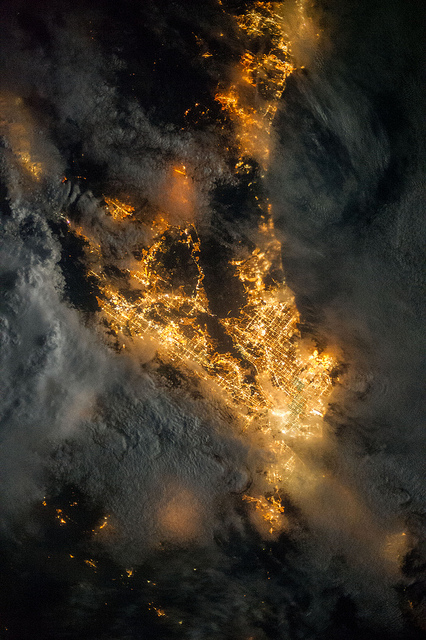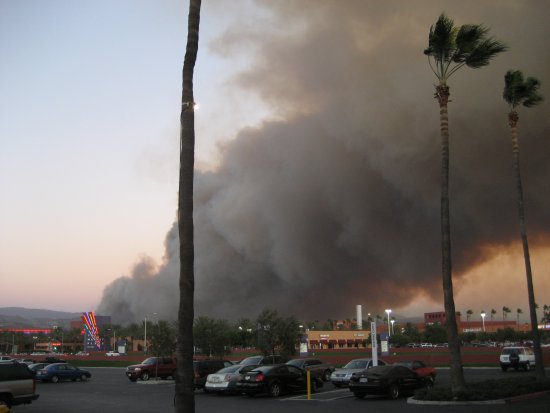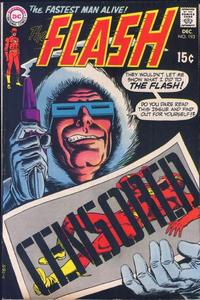Last night, I saw more stars than I’d seen from home in years.
I’d just gotten back from a midnight grocery run (on which I’d had the disorienting experience of watching a three-quarter moon rise — talk about a “grin without a cat”), and the combination of recent rain, fewer house lights at that hour, and my own dark-adapted eyes made the night sky look more like what I remember from home in the suburbs when I was younger.
It was still depressingly few stars compared to those times I’ve been out camping in the desert, or even the time we went to San Simeon and I drove out of town a few miles to try to spot a comet (it didn’t work)…and nothing on the time we stopped in the middle of the Ka‘u lava fields on Hawai‘i. But it was enough that I could make out part of Orion’s arm and club, which is a lot more than I usually see here in the southwest of Los Angeles. If the moon hasn’t risen, Juipter would have dominated the view, and it seemed as bright as Venus had been just after sunset, though I now know that’s an illusion of memory. Even the Hyades were clear.
Of course, that was only in part of the sky: straight up, to the south, and to the west. North and east faded into the general haze of light from greater Los Angeles. Even the Pleiades, sadly, used to be easy to spot, but I could barely pick them out.
Earlier in the evening, I’d tried to point out Orion and Cassiopeia to my almost-three-year-old son, but he’d been completely uninterested. I wonder: Have I missed the window to show him how awesome the night sky can be?
On my flights up to San Francisco and back a few weeks ago, I noticed that the Los Angeles area at night, rather than being mostly dark with islands of light, is mostly light with islands of dark: the mountain ranges and hills. Today I stumbled on a photo from space that really demonstrates it: Artificial Light, taken by, well, it doesn’t actually identify the astronaut, but since it’s credited to NASA and dated July 21, 2013, it’s probably Karen Nyberg (unless the site is confusing it with this shot of hers).
In this image, south is up and north is down. San Diego is at the top of the frame. The lower half is Orange County, the Los Angeles basin, and the San Gabriel Valley. The Santa Ana Mountains form an empty gap in the middle, bordered by the communities along the I-15 to the left. A narrower gap, Chino Hills and connected hills, extends downward to the right, ending at a bright spot that marks Downtown Los Angeles. The San Fernando Valley is covered by clouds, though you can see a glow from beneath. I had no idea Hemet had grown so big.
I grew up next to that empty area in the middle, and at the time it was even bigger. A lot of farmland and open space has filled in over the last 25 years. And all those street lights leak light upward into the sky, where it scatters and hides more and more stars.
We don’t need all that light leaking into the sky. It doesn’t help visibility down on the ground, it’s a waste of energy…and it hides what used to be a basic source of wonder that anyone could experience.




Thank you for sharing that photo. I had no idea that was artificial lights until I started reading your post. I absolutely love going star-gazing, but it’s really neat (and a bit saddening) to look down on the city lights from earth.